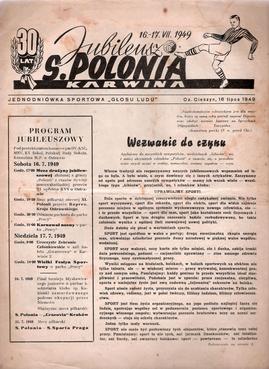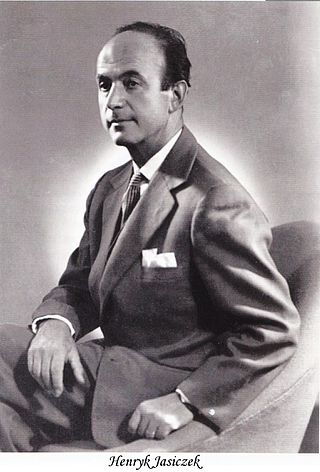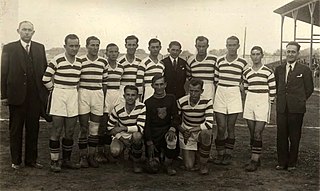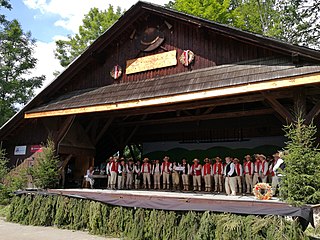Trans-Olza, also known as Trans-Olza Silesia, is a territory in the Czech Republic, which was disputed between Poland and Czechoslovakia during the Interwar Period. Its name comes from the Olza River.

Cieszyn Silesia, Těšín Silesia or Teschen Silesia is a historical region in south-eastern Silesia, centered on the towns of Cieszyn and Český Těšín and bisected by the Olza River. Since 1920 it has been divided between Poland and Czechoslovakia, and later the Czech Republic. It covers an area of about 2,280 square kilometres (880 sq mi) and has about 810,000 inhabitants, of which 1,002 square kilometres (387 sq mi) (44%) is in Poland, while 1,280 square kilometres (494 sq mi) (56%) is in the Czech Republic.

Polski Związek Kulturalno-Oświatowy is a Polish organization in the Czech Republic. It represents the Polish minority in the Czech Republic together with the Congress of Poles. PZKO is the largest Polish organization with largest membership in the Czech Republic, although the number of members is decreasing as a result of demographic decline of the Polish community.

Głos is the main and largest Polish newspaper in the Czech Republic. It represents the Polish minority in the Czech Republic, especially the Trans-Olza region.

The Polish minority in the Czech Republic is a Polish national minority living mainly in the Trans-Olza region of western Cieszyn Silesia. The Polish community is the only national minority in the Czech Republic that is linked to a specific geographical area. Trans-Olza is located in the north-eastern part of the country. It comprises Karviná District and the eastern part of Frýdek-Místek District. Many Poles living in other regions of the Czech Republic have roots in Trans-Olza as well.

Silesia football team is an informal regional football team made up of players from football clubs located in Silesia, under the auspices of the Silesian Football Association. It is not affiliated to FIFA, and does not play in official international matches.

Paweł Kubisz was a Polish poet, writer, journalist, and activist. He was one of the most important poets from the Trans-Olza region of Cieszyn Silesia.

Henryk Jasiczek was a Polish Czech journalist, poet, writer, and activist. He is considered one of the most important writers from the Trans-Olza region after World War II and one of the most popular local Polish poets.

Mistřovice (help·info) is a village in Karviná District, Moravian-Silesian Region, Czech Republic. It was a separate municipality but became administratively a part of Český Těšín in 1975. It has a population of 460 (2005).

Polski Klub Sportowy Polonia Karwina was a Polish multi-sport club, located in the city of Karviná (Karwina) in Czechoslovakia. It affiliated nine sport clubs and an amateur theatre group. Most successful and most popular was a football club.

Wilhelm Przeczek was a Polish teacher, poet, writer, and activist. He is considered one of the most important Polish writers of his generation from the region of Trans-Olza.

Karol Daniel Kadłubiec is a Polish Czech ethnographer, folklorist and historian. He specializes also in ethnology, history of language and dialectology, and in a studies of culture, folklore and language of Cieszyn Silesia and Trans-Olza.
Władysław Młynek was a Polish Czech teacher, writer and poet.

Gorolski Święto is an annual international cultural and folklore festival held in Jablunkov, Czech Republic, the first weekend in August. It lasts from Friday to Sunday. It is organized by the Polish Cultural and Educational Union (PZKO) and the folklore group Gorol, and preserves the traditions of the Czech Poles and Silesian Gorals. It is the largest cultural and folklore festival in the Trans-Olza area, drawing thousands of spectators each day of festivities. In 2007 almost 20,000 people visited the festival. Notable personalities, mainly from the Czech Republic and Poland, also visit the festival each year. In 2007 Prime Minister of the Czech Republic Mirek Topolánek visited the festival.

Wiesław Adam Berger was a Polish Czech writer. He was connected with the Trans-Olza region of Cieszyn Silesia.

Józef Ondrusz was a Polish Czech teacher, writer and folklorist.
Janusz Gaudyn was a Polish physician, writer and poet. He is known mostly for his aphorisms.
Adam Wawrosz was a Polish Czech poet, writer, and activist from the Trans-Olza region of Czechoslovakia. He is considered the most important writer of the folk literature of Cieszyn Silesia.
Těšínsko is a regional magazine, published originally quarterly, currently twice a year by the Muzeum Těšínska in Český Těšín, Czech Republic. It focuses on the history and culture of the Czech part of Cieszyn Silesia.

Stanisław Zahradnik is a Polish Czech historian. He specializes in the history of Cieszyn Silesia and the region of Trans-Olza.
















